Saving the economy by decreasing marketing margins
In this part of my unnamed short series about the market and general economy i will introduce you to the market margins which are the reason why all prices are so high.
Previous post: products are designed to fail
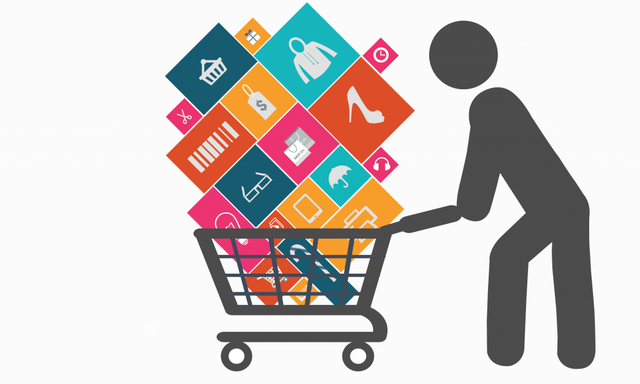
Up to a decade ago adults kept telling children and adolescents ‘Study and become a marketer, that’s where the money is!’. While the dreams of those who followed such advice often crashed and burned, there is some truth in that advice. The marketers really can get extremely high ROI (return on investment) because they can set arbitrarily high market margins.
What is market margin
The market margin is the factor with which the production price of a product is multiplied to obtain the retail price.
So if a manufacturer sells a product for $X to the retail store, the retail seller sells it to the end customer for a price of 4×$X or even 6×$X. This means we are essentially overpaying everything we buy (well almost everything) by 4 to 6 times (400 - 600%).
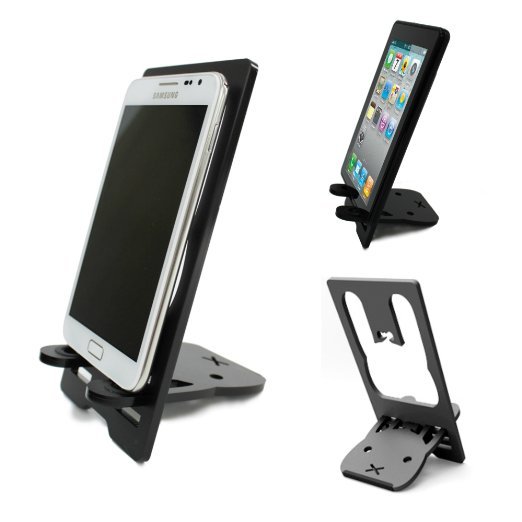
If you have ever bought a $60 chinese made toy you have likely overpaid it by 6 times as its true value is only $10. When i was told this (when i started working with marketers) i was flabbergasted… 600% profits?! OUTRAGEOUS!
Immediately it had me to start selling on my own for a market margin of 2-3, but after doing the math i realized the endeavour would likely fail.
You see, the retailer does not get to keep the $50 difference from the above example. The $10 go to the manufacturer, then the retailer must also pay for shipping, handling and cargo insurance which can total at around $5. As the product is imported the retailer must also pay the import taxes which would amount to around $1-$2 for this example. So by the time the toy arrives to the retailer's store the retailer has already paid approx. $16 for it.
Now we must also include man hours needed to find the product, order it and arrange logistics. If we import 1000 units at once we can say the costs total at around $0.1. Add to this the costs of renting/maintaining the store, cost of employees and warranty claims and you can say the retailer has invested $20 per unit sold.
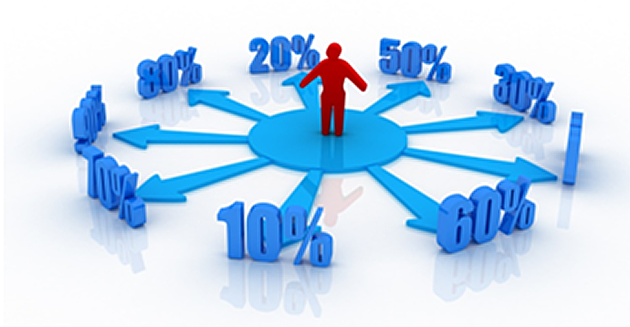
But the retailer does not get to keep the remaining $40 because he is still not done paying his dues. Of the $60 price tag $12 to $15 (depending on the country) goes to the GOVT in the form of another tax. So our ‘’poor’’ salesman only gets to keep $25.
By the end of the year the GOVT will tax the guy again with as much as 25% of what he earned in a year so in a worst case scenario the retailer only doubles his investment. This means that the effective market margin was a factor of 2 and not a factor of 6 as the consumer sees it - and feels it on his wallet.
The rich marketer
The old notion of money makes money is correct here as the more retail stores a seller has, the more shelves and warehouse space he has the better is the market margin.
You see the example in the previous subheading is made for small sellers like you and me, who can only afford to invest $10 000, $20 000 or $50 000. The big players in the game (like huge malls and retail franchises) can easily maintain an effective market margin of 3 because they buy much greater volumes (volume = number of units).
The bigger the volume is, the lower is the production price - which in turn also means lower import tax. With higher volumes also come lower transport and logistics costs per unit. While the end tax is still the same the retailer can easily save another $10/unit with buying very high volumes.
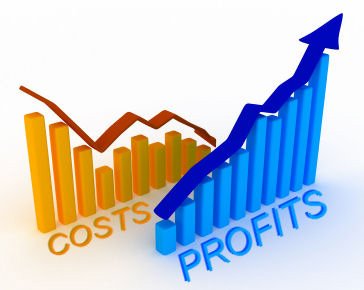
This system does not exclude new players from becoming big, it just means they won’t become rich quick.
The lethal trap
In hopes of gaining big margins big players and small-timers are on a never ending quest for higher volumes. This means that they need to invest, invest, invest.
Invest into their storage capacity
Invest into increasing their shelf space
Invest into volume itself
Invest into employees
Invest into marketing else they won’t sell a thing
Do you see which problem can quickly be encountered here?
What ought to be (but isn’t) a synonym for inves? It’s risk.
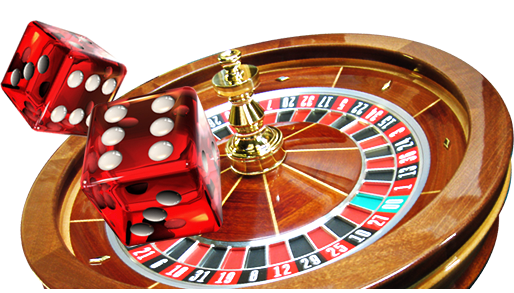
You buy 10 000 popular smartphones and invest a lot of what you have into that. 1 month later that smartphone - for whatever reason - falls out of favour with users. In that month you only sold 2000 of those phones hence you are still left with 8000 units which you cannot sell. You paid half a milion USD for those phones and now not only are you unable to sell them, you will also need to pay to dispose of them properly.
It’s a trivial example but overinvestment like that has killed many big and small retailers in the past. Such cases were especially problematic after the 2008 crisis as thousands of people lost their jobs as a consequence of this.
Reforming the system
As you’ve seen in subheading 1 much of what we pay for a product goes to the government. Yet the retailers can live on effective market margins of just 2.
In subheading 2 you’ve seen that big retailers can increase the margin to 3 yet as a consequence of that they are more liable to collapse.
What happens to the “margins money” and the tax money is always a subject of heated debates, but we can probably say that we never see much of it again. So we could propose a better “middleman” system without destabilizing the entire economy.
In fact such systems have been existing for quite a long time, yet have only been really prominent online. I am referring to a system of dropshipping and affiliate marketing. In this system the manufacturer can gain much higher margins which not only increases productivity but also STEEMulates (pun intended) development and creation of new jobs. The marketer here gaines far lower margins (on the level of a few percent) but has very limited risk and is thus not liable to collapse.
One could argue that this decreases the number of available jobs for marketers, but that is hardly the case as new - more specialised - job roles become available.
The end consumer also gains in this case as the end price he pays can be far lower than with a standard shop system.
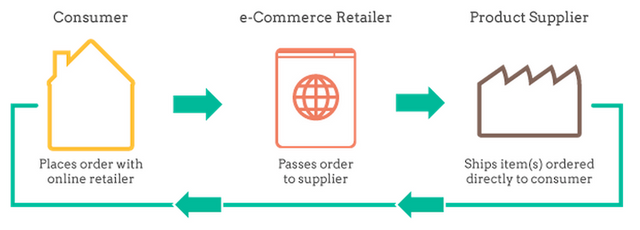
Described like this it seems like a great wealth redistribution system as more people are getting paid more and fewer are getting super-rich.
So if the system is so good that everyone wins, why did it not completely substitute the current ‘’shops system’’?
A large part of the answer to this is in psychology as people just love shopping and browsing among a variety of products. It creates a special dopaminergic experience which is additionally enhanced if you can physically touch those objects. This is the big allure of brick&mortar stores with a diverse range of products, it triggers our ancient gatherer instincts and that is a pleasurable experience. The same goes for big online stores - just without the tactile addition.
Until most of the population is willing to do more focused/targeted buying physical retailers will keep existing, growing and dominating the market. But as the newer generations are maturing and transitioning into the “main buying force” we will see a gradual transition to the new system.
In my next post I’ll talk about the manufacturing price, how it is derived, how it affects development, jobs and the end price.
NZ has that reputation still, but it's old history. They were mostly ditched in 1984. These day, compared to Australia we have a much more open economy.
For example with cars, NZ allows open importing of all used cars from Japan (we share being right hand drive), so by not trying to protect a local car industry (which was crap anyway) we are one of the cheapest places in the world to buy 5 year old Jap cars (which are bombproof reliable)
I don't look at stuff like click through, as most of our business is repeat customers and the site is just an easy way for them to place orders.
I know some people seem to prefer light websites, but if about 90% of websites are white background, then that preference is over catered for.
Personally I like dark and black backgrounds, and always go with my own preferences over other peoples.
http://www.frot.co.nz/design/
In the past 25 years that I've owned retail businesses (bicycles and food supplements), The margins have consistently been between 40% (the bottom line) and 60% (about as much as we can get away with before another retailer will undercut us).
Any retailer that does big mark ups is going to get slaughtered, as Ali Express is doing to Amazon, and as China is doing to America in general.
I know it sounds harsh and selfserving but that is one slaughtering i don't mind seeing. Afterall if the big mark ups deminish to say 20% the home (USA, EU) manufacturers will again become more competitive and thus eventually again favoured by the end consumer. And this is what i'm hoping for as it'd stimulate R&D.
If i understand correctly you are saying that 40% of your retail price is profit? Which'd mean a factor of 1.8 from the whole sale price. I have been observing for a while now that many things are cheaper in USA than in EU, but i didn't realize it has been so for 25 years.
Jeepers no - I'm saying that with an average 50% mark up a well run business rakes in 20% after expenses like wages, rent, taxes, and a bunch of stuff like power, phone, internet, stationery etc.
Keep in mind that is not on top of wages paid to the owner - that is the owners only income. If the average mark up drops below about 50% a retail business is screwed, which is why something like 80% of new businesses go bust in the first five years...
Ok, 20% is insanely low... Does that even create any cushion for possible ''crashes''?
I'm currently working on a physical product and am aiming for 30% profit - from the wholesale price - and the retail store would have a market factor of 3-4 (prior to shipping, etc.).
May i ask in which sector (toys, food, appliances, etc.) is your retail store?
20% is pretty OK, most business make less. No it doesn't create much cushion though!
We had a bike shop from 1991 to 2000 and it was the only bike shop in Wellington to avoid going bust - http://www.frot.co.nz/cs/cycle_services.htm#history
Now we have an online business selling food supplements - http://www.naturefoods.co.nz/
Oh NZ! I hear import taxes are murtherous.
Congratulations on being the last man standing :) did you then sell the shop for larg summs?
I went the AM route a few months ago (because my budget was too low to start selling my own products retail - but that project is still pending).
Your online shop is nicely organized and looks tidy. How's CTR and conversion?
I must say i love dark themes and have used a darker theme for a while but was later told light themes ''inspire'' more thrust. Did you do any testing on that? I haven't had the chance yet but will try it in the future as i'd preffer to use a dark theme.